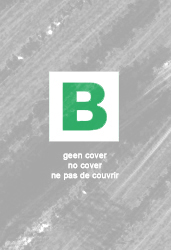Samenvatting
In March 2007, the Architectura et Amicitia Society (AetA) went on a eld trip to Cuba. The rst building we visited was the Casa de la Cultura in Velasco, a village near the town of Holguín. We tracked down this cultural centre with the help of Roberto Segre, architect of Italian descent and an authority in the eld of the modern architectural history of Latin America. We had read that it was a remarkable building, designed by Walter Betancourt, an American architect who settled in Cuba aer the revolution. The pictures we saw looked promising. Apart from that, it would be a surprise what we would nd. With hindsight, it proved to be the highlight of our eld trip. Not only due to the remarkable design, but also because of the building’s role in town and the warm-hearted reception by the local people. Like many of Cuba’s buildings, the cultural centre was dilapidated and in urgent need of refurbishment. They had made some makeshi repairs in places. When we arrived by bus, a fanfare of musicians dressed in red shirts began playing from the stage in the square. Aer a few opening words by the director and a well read poem by an impressive blonde lady, we were led indoors to an exhibition space with local artists. We were then shown through to the theatre auditorium and surprised with performances by singers, dancers and guitarists of various ages and in dierent arrangements. As the nal number of the show, we were treated to a festive lunch. Aerwards, we heard that tourists seldom come to Velasco, that people never show an interest in the cultural centre of which the city is so proud.
The next item on the programme was a visit to the art schools near Havana by architects Ricardo Porro, Vittorio Garatti and Roberto Gottardi. These are also remarkable buildings dating back to the rst years aer the revolution.
These art schools had been in a bad state of repair for a long time, but were now being restored. And our rst thought was: that is what they should do with Velasco’s cultural centre. At rst, we decided to spend what little money there was le at the end of the eld trip on the restoration of the cultural centre. But then we wondered whom to give the money to and whether it would have any eect. When we heard that the restoration of the art schools began with a publication in 1999, we decided to spend the eld trip balance on an issue of Forum about the cultural centre of Velasco. Those funds have meanwhile been supplemented by AetA and other institutes that are well disposed towards the cultural centre and the community of Velasco. What else does the Casa de la Cultura have to oer for the occasional group of visiting architects besides a hero’s welcome? By request of AetA, John Loomis, the author of the art school publication, wrote an article about the architect Walter Betancourt, while Johanna van Doorn and Lara Voerman of the Steenhuismeurs agency travelled to Cuba for further research. They spoke to the villagers,
architects and other people with stories to tell about the cultural centre. One of those was Flora Morcate Labrada, a professor of architecture from Santiago de Cuba, who wrote his thesis on Walter Betancourt’s work. Flora was repared to write an article for this issue and also introduced them to Betancourt’s
son, Lorgio. Lorgio told them about his father’s motives, his adventurous character and love of nature. Furthermore, he lives in his father’s house, in which time seems to have come to a halt – with all of Walter Betancourt’s
furniture and paintings. Omar Lopez was also contacted, ‘historiador’ of the region and director of the municipal Conservation Oce. The present director of the Casa de la Cultura, Gelasio Reyes, extended every courtesy to facilitate research into the cultural centre. He gave an extensive tour of the complex, now aected by dry rot, dampness and two cyclones, and told them about the building initiative. Through Reyes contact was made with Jorge Santana, the son of the supervisor who had spent many years building the complex under Betancourt’s leadership. His father had had to be taken o the roof when he was 81 years old and son Jorge still helps out with repairs. Yet more inside stories about building the cultural centre in Havana were gained from Selma Diaz and Miguel Coyula. As a young architect at the Ministry of Construction, Diaz had worked her way up to be the person in charge of building works in Cuba’s eastern region. In this position, she was Betancourt’s manager for twelve years when he worked for the state from Santiago de Cuba. Coyula is a renowned Cuban architect and urban development specialist. All the information that surfaced, conrmed that we had ‘discovered’ a remarkable building at the time, certainly worthy of a publication.
Inhoudsopgave
Jurriaan van Stigt—Editorial--Stacking Stones or Stones Stacked, p 10
Henk Döll, Mechtild Linssen—Foreword —A Discovery, p 18
Johanna van Doorn, Lara Voerman—Icon in Cuba’s Granary, p 24
John A. Loomis—Margin, Identity,
architecture the case of Walter Betancourt, p 60
Johanna van Doorn, Lara Voerman—Casa Betancourt, p 68
Abel Blom—The Speelhuis Theatre Rises from the Ashes, p 72
Flora Morcate Labrada—Betancourt in Cuba, p 80
Paul Meurs—The Exotics of Modern Architecture, p 88
Bé van Aalderen, Niek van Vugt—Personal Style, FORUM XXIX-2, p 94
Hans van Heeswijk—Young Architecture Is More Vulnerable Than the Old, p 112




